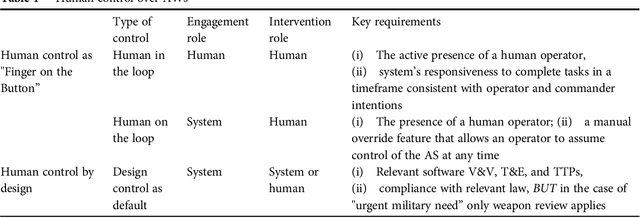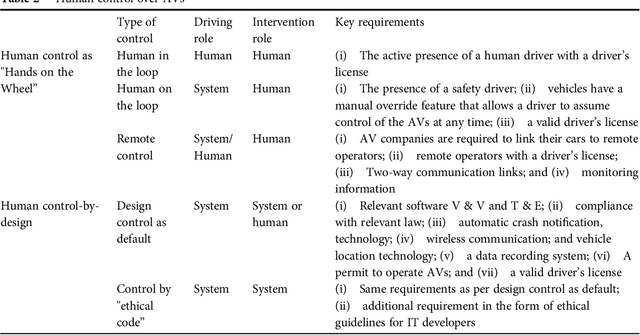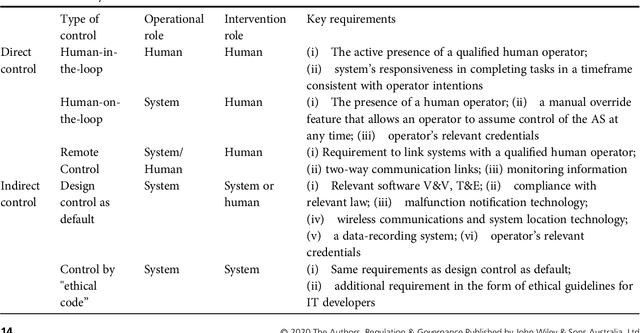Regulating human control over autonomous systems
Paper and Code
Jul 22, 2020


In recent years, many sectors have experienced significant progress in automation, associated with the growing advances in artificial intelligence and machine learning. There are already automated robotic weapons, which are able to evaluate and engage with targets on their own, and there are already autonomous vehicles that do not need a human driver. It is argued that the use of increasingly autonomous systems (AS) should be guided by the policy of human control, according to which humans should execute a certain significant level of judgment over AS. While in the military sector there is a fear that AS could mean that humans lose control over life and death decisions, in the transportation domain, on the contrary, there is a strongly held view that autonomy could bring significant operational benefits by removing the need for a human driver. This article explores the notion of human control in the United States in the two domains of defense and transportation. The operationalization of emerging policies of human control results in the typology of direct and indirect human controls exercised over the use of AS. The typology helps to steer the debate away from the linguistic complexities of the term autonomy. It identifies instead where human factors are undergoing important changes and ultimately informs about more detailed rules and standards formulation, which differ across domains, applications, and sectors.
 Add to Chrome
Add to Chrome Add to Firefox
Add to Firefox Add to Edge
Add to Edge